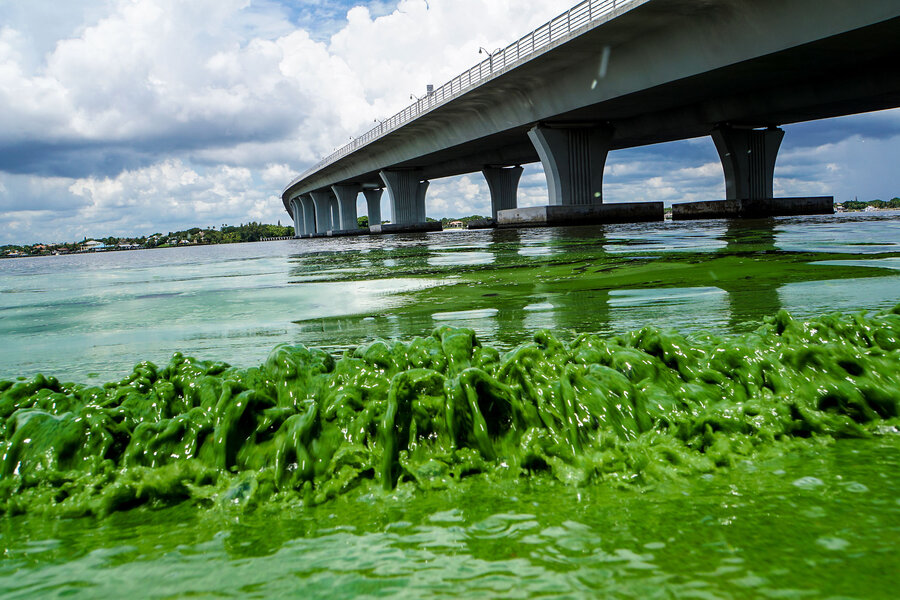Toxic algae blooms in Fl. linked to too much fertilizer and to climate change
Recent blooms of toxic algae in southern Florida, which have provoked Governor Rick Scott to announce a state of emergency, may be tied to fertilizer chemicals from agricultural and residential origins.
Waterways and beaches along Florida’s Treasure Coast, Lake Okeechobee, and the Everglades have been experiencing massive blooms of toxic algae since May. The cyanobacteria algae—described as thick, pea-green, and foul-smelling—is intensely toxic and poses health risks to people and wildlife in the area. At its peak, the bloom in Lake Okeechobee covered 33 square miles—or about one-third of the lake's surface. One source estimates the total area of the algae to be roughly the size of Miami.
The impact of these algae blooms has already proven disastrous. Tourism, a main source of income for residents around Lake Okeechobee and along the coast, is down. Contact with toxic algae blooms “can affect the gastrointestinal system, liver, nervous system, and skin.” Fish are dying, and many have raised concerns about manatees and other large wildlife in the area.
So what caused this massive outbreak? The blooms spread, in part, due to flood-control measures taken by the U.S. Army Corps of Engineers; to prevent Lake Okeechobee from overflowing earlier this year, the Corps released large amounts of water from the lake into nearby estuaries. According to a statement, these actions “upset the freshwater-saltwater mix in the estuaries” and contributed to the spread of the toxic blooms.
But the key factor seems to be high levels of nutrients (like nitrogen and phosphorous) in the water. According to a spokeswoman for Earthjustice, speaking to CNN: "The algae outbreaks are triggered by fertilizer sewage and manure pollution that the state has failed to properly regulate. It's like adding miracle grow to the water and it triggers massive algae outbreaks."
Essentially, the water in Lake Okeechobee is contaminated by nutrient-rich manure and waste-filled runoff from nearby farms and houses. Exacerbated by hot summer weather, these conditions create an ideal habitat for toxic algae. Some fear that, once the algae die off, large swaths of affected water could turn into oxygen-deficient “dead zones.”Over-fertilization and poor land management, coupled with various manifestations of climate change, mean that algae blooms are becoming much more than a seasonal annoyance: these blooms are threatening ecosystems and biodiversity in the region.
The Army Corps of Engineers has drastically reduced the amount of lakewater flowing into nearby estuaries, but the root of the problem—the cause of the high nitrogen and phosphorous levels—is less immediately remediable. Next steps include a focus on responsible agriculture and gardening practices to reduce fertilizer runoff, as well as efforts to combat climate change.
In light of these recent events, the Everglades Foundation has launched a ten million dollar prize for developing a cost-effective, sustainable technology to reduce phosphorous levels in the water.
This story originally appeared on Food Tank.





